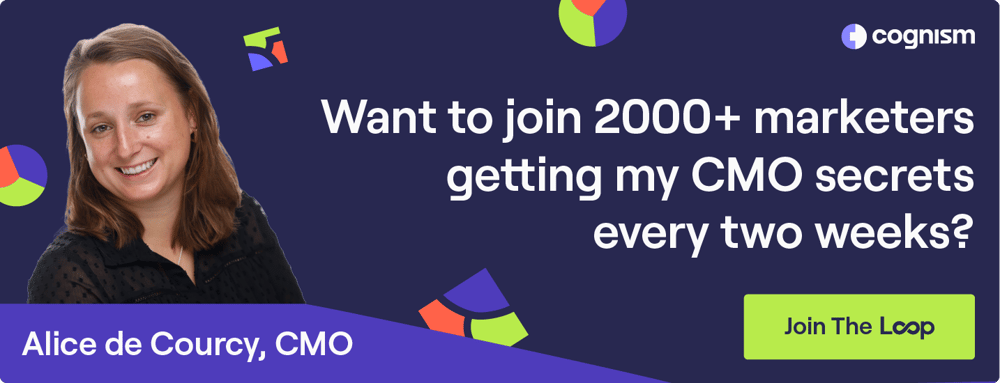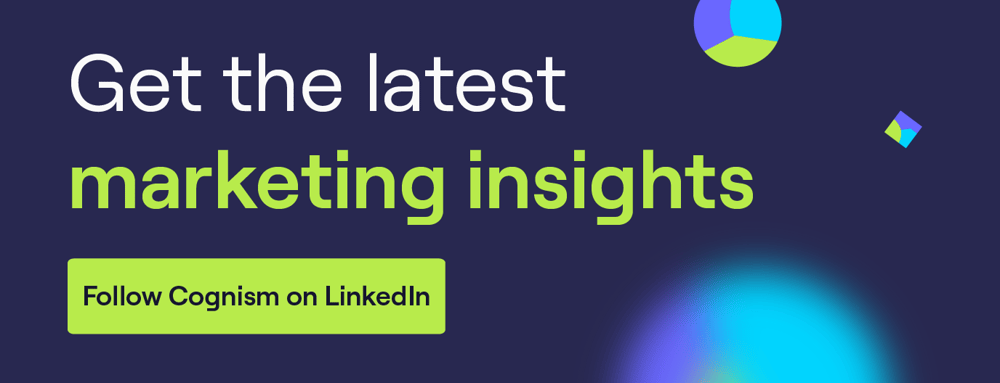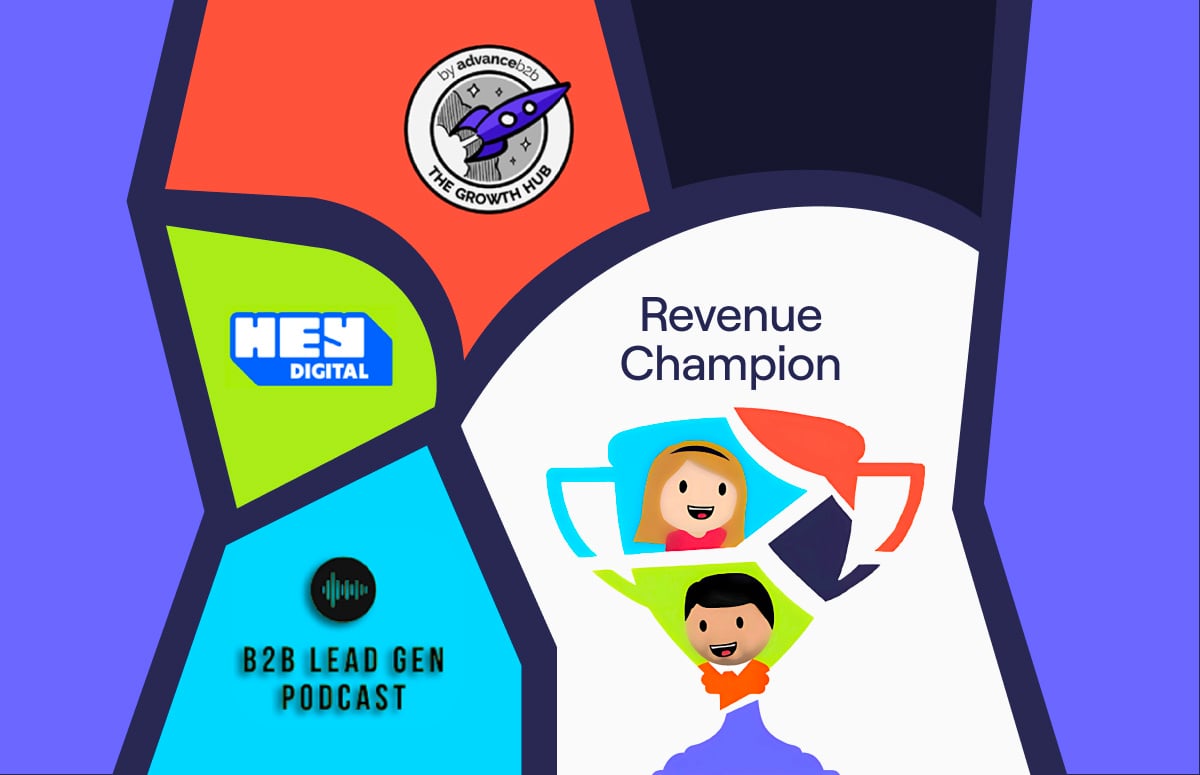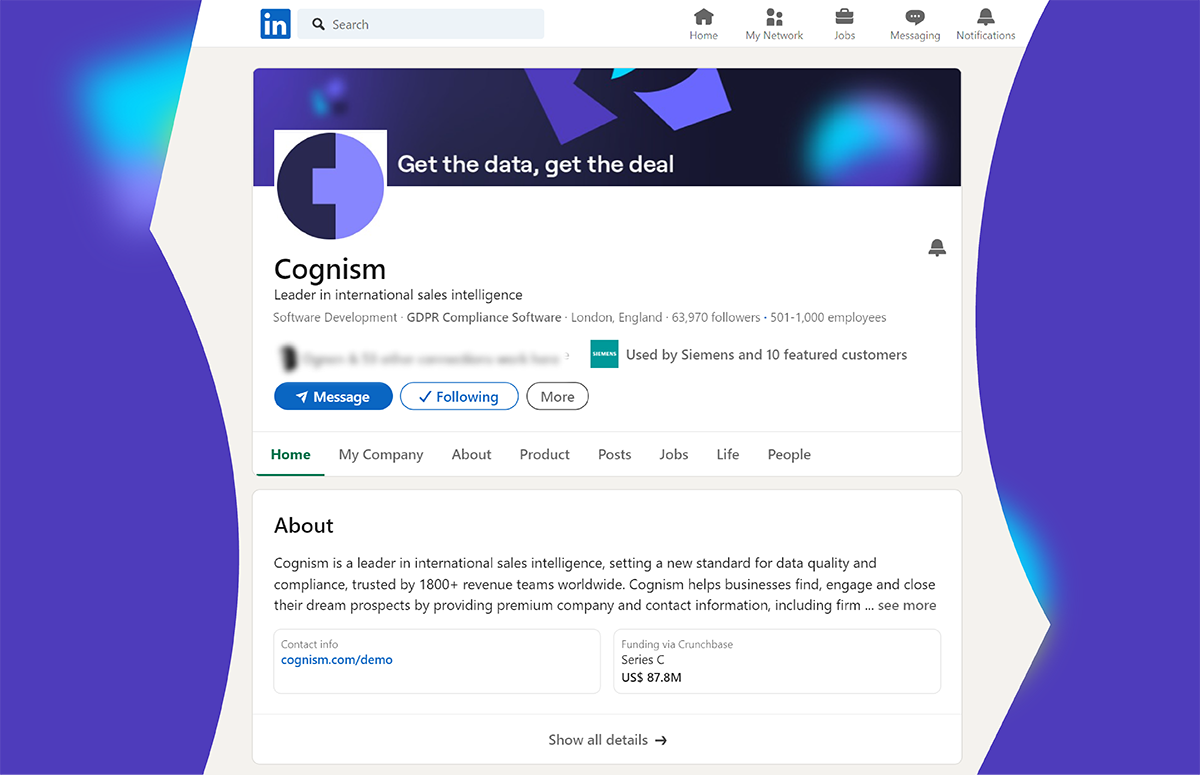B2B Content Repurposing: Ultimate Guide With Examples
Content repurposing resources on this page:
Have you heard of the content marketing strategy “create once, distribute forever”?
Create once. Distribute forever.
— Ross Simmonds (@TheCoolestCool) August 5, 2020
Most people will spend 20 hours to create a masterpiece and spend 20 minutes to promote it. Then they're left wondering... Hmm... Why didn't that take off?
Distribution folks. Embrace it...
These days, publishing a blog on your website just isn’t enough. You need to take your content and put it on the channels and platforms where your audience hangs out every day.
And that means you need to get started with a clever tactic called content repurposing.
In this guide, I’ll explain how we tackled repurposing at Cognism. You’ll also learn what this tactic is and how you can use it to improve your marketing.
Use the menu or scroll 👇 for the good stuff.
What is repurposing your content?
Content repurposing is a B2B marketing tactic whereby businesses reuse existing pieces of content to expand their reach.
For instance, you might take a blog post and transform its main points into a video clip or a social media post.
But to clarify: repurposing content is not resharing your content or someone else’s on your social platforms.
And it’s definitely not sharing someone else’s original content with your added opinion.
With repurposing, you take existing content and transform it to suit whichever distribution channel or platform you’re publishing it on.
Some examples of a content repurposing strategy are:
- Creating LinkedIn carousels from a long-form blog post.
- Republishing podcast audio as short-form videos on YouTube.
- Typing up podcast episodes as blog content.
- Turning blog posts into long-form videos.
What are the benefits of content repurposing?
There are several advantages to repurposing your content output. Here are some of the most noteworthy:
1. Increases reach
By sharing content across your different social media channels, more and more people will see and share your posts.
This leads to better brand awareness, more reach and a wider audience.
Think about it this way:
Let’s say that not many people saw your blog post the first time you published it. But if you retool it for a different social media channel, you have another chance to reach an audience segment that might have missed it the first time around.
2. Reduces costs
No matter the size of your organisation, repurposing can help reduce the costs associated with content creation.
Since you’re reusing content, your team will be free to work on other revenue-generating projects.
So with content recycling, you’re doubling your revenue-generating activities and cutting costs!
3. Saves time
As I mentioned above, repurposing can reduce the number of hours your team spends creating new pieces of content.
This streamlined way of SaaS marketing allows them to spend more time optimising and improving existing pieces, rather than constantly creating fresh content every time.
That’s a win-win in anyone’s book!
4. Supports SEO
Repurposing your content means you’ll create more and more opportunities for sharing. This will give you a big SEO boost, especially your domain rating.
Why, I hear you ask?
Because the more you share your content, the more opportunities are created for backlinks.
And then search engines, like Google, will find your site more credible and rank you higher.
5. Builds awareness
The more your brand is seen, the greater the awareness and strength of your overall message.
Your target audience will also start to view you as an authority in your industry. They’ll come to trust you more than less visible brands.
The result?
You’ll reach new larger audiences and form better relationships with your current customer base.
How to make repurposed content?
To start taking full advantage of this B2B marketing strategy, you need to follow a few guidelines.
To start with, it’s really about where you want your content pieces to go and what lead source channels you use to promote them. If you have a popular blog post you’re thinking of repurposing, you have to adapt it to work for each channel or medium you’re on.
For instance, at Cognism, when we repurpose our blogs as video content on YouTube, we don’t just read them to the camera as is. We rewrite the script to make it more engaging for the viewer.
Take this example of a video we repurposed from our blog post on the B2B sales process:
If you compare the two, you’ll easily spot the differences. The original post is long-form written content; it’s more thorough and optimised with SEO keywords. The video post is more fun and conversational while still being informative.
Beyond this, in my opinion, there are four steps to take on your repurposing journey. And here they are! 👇
1. Decide on your goals
Ask yourself a question:
“What do I want to achieve by repurposing my content?”
When you know what you’re working towards, it’s easier to track your progress towards content marketing success.
Here are some things to consider:
- Are you looking to reach new customer personas?
- Do you want to attract leads or increase brand awareness?
- Do you want to spend less time creating content or just have it seen by as many eyes as possible?
Your goals will differ depending on which distribution channel you publish your content on.
2. Research your channels
Speaking of channels, the next step is to decide where you want your content to go. That means conducting research.
My top tip:
Always start researching before you repurpose content. Then, when it comes time to share, you’ll have a better idea of the language you need to use, the ideal length of your content format, and the style or humour needed for each channel.
To start, create a list of social media platforms where your total addressable market spends most of its time.
Ask yourself:
- What format should your content take on each channel?
- What sort of tone should this content have?
By doing this, you’ll familiarise yourself with how people communicate on each platform and learn how best to communicate with them.
Remember, each channel will be different. For instance, you’ll have to write differently on LinkedIn than you would on Facebook or X (formerly Twitter!).
Discover top trends
Once you’ve ascertained what your audience wants, it’s time to check what’s trending on your channels.
Here are some questions to answer when investigating social media sites:
- Are certain hashtags more popular than others? If so, why?
- Are you noticing a topic that’s being shared and spoken about repeatedly?
These are things to look out for and make a note of.
Facebook, LinkedIn, and Reddit have community and discussion groups. Join ones relevant to your industry - they’re great places to get content ideas.
Investigate YouTube SEO
For YouTube, you want to be digging into SEO keywords.
YouTube SEO is much like Google SEO. As a primer, you want to find low-difficulty, high-volume keywords relevant to your business.
If you already have an SEO-optimised blog post, save time by turning it into a video using a text to video AI tool. You can then repurpose your content as videos targeting your key search terms.
Follow thought leaders
Last but not least, check out what the industry leaders and business owners on each platform are up to.
On LinkedIn, Cognism looks up to companies like Gong and experts like Chris Walker and Josh Braun.
On YouTube, we’ve taken leaves out of Moz and Ahrefs’ books.
Follow this content creation workflow:
- Study your feed/followers on each platform.
- Identify the top posters, brands and subject matter experts.
- Take inspiration from how these B2B influencers operate. Bring some of their style into your own content.
3. Select your content types
Now that you’ve completed the research phase, your next step is to choose the content you’ll repurpose for each channel. This means creating a list of criteria to follow.
To start, create a checklist for each channel. The checklist should include elements such as:
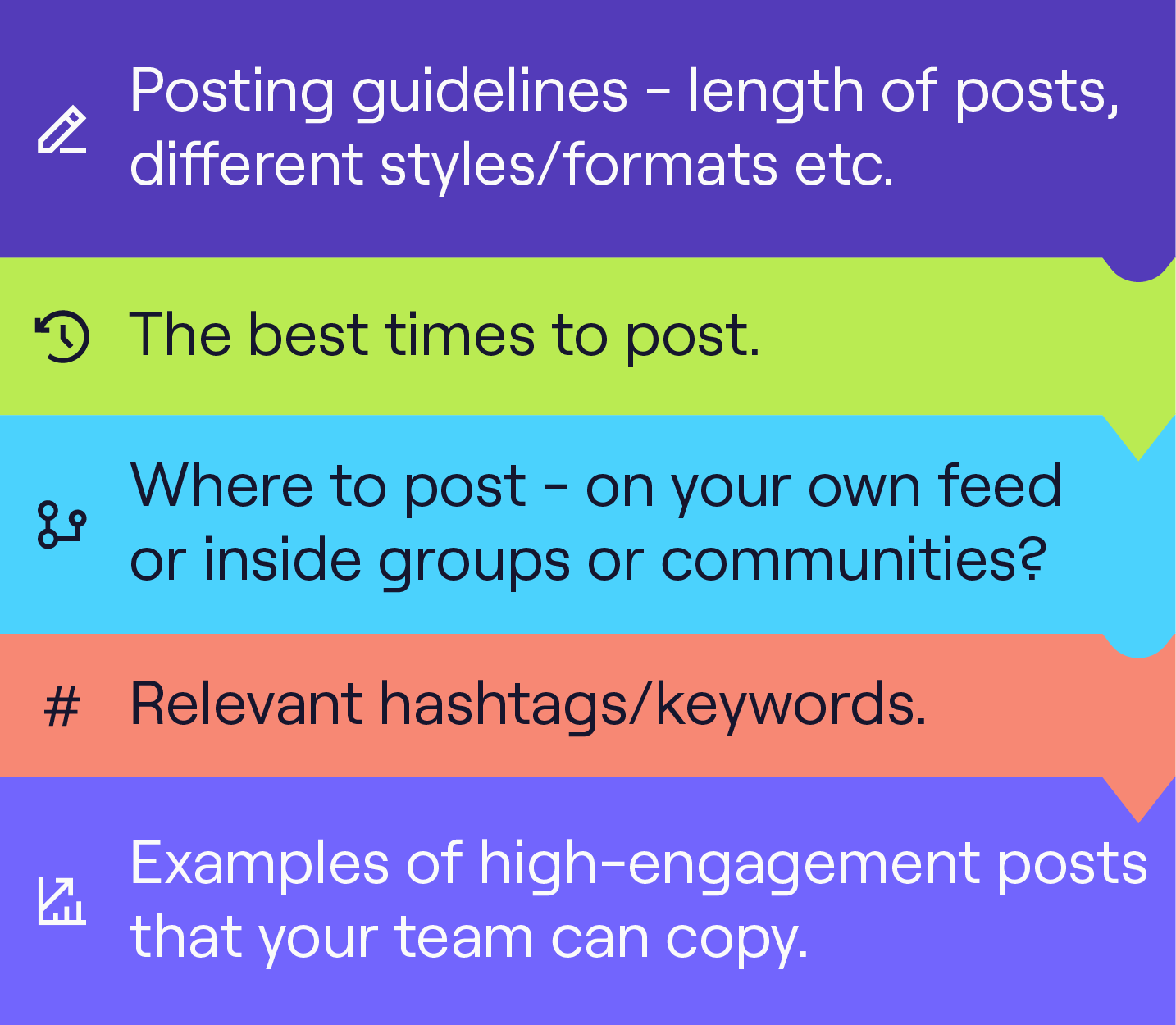
Then, once you have these guidelines in place, audit your content library. Look for themes/topics that would work well being repurposed elsewhere.
Just keep in mind that not all of your content needs to be repurposed or even should be.
Here’s my advice for where to start:
- Go with your most popular blog posts. They’re already getting traction with your audience; it stands to reason that they’ll work on other platforms too.
- Look for content that’s performed well or that your audience has responded to/engaged with.
- Don’t neglect your evergreen content! Most content marketers start with a blog. That’s good for repurposing because the content is all there, and it’s pretty much there forever. You can use those blogs in so many different ways.
Here’s an example from Cognism’s content team:
We designed an eBook that consisted of every blog we’d published for six months. That acted as a very powerful lead magnet for us. It’s an example of how your standard, everyday content can be combined to create something much bigger and more definitive.
4. Create and distribute
Once you have a good outline and strategy for sharing your content, it’s time to start reformatting it.
Try out different types of content and see how your audience likes to engage with them. Here at Cognism, we’ve often found success with LinkedIn carousels.
To create them, we take long-form articles and reduce them to 100 words or less, making them hyper-digestible and actionable. Then we add an eye-catching graphic. This has worked very well for our audience.
However, you might find that your audience prefers video for some things. It’s just a case of trying these different formats, measuring your results, and seeing what works for you. There’s no absolute best practice here. It all depends on your audience.
Some repurposing ideas include:
- Turn your live events into video content and podcasts.
- Turn your blog content into videos, text-only social posts or Twitter threads.
- Stitch some related blogs together to make long-form content like playbooks or eBooks.
- Take sections of your blogs and turn them into infographics or carousels.
- If a colleague makes a speech at an event, record it and write a blog summarising the key points.
YouTube repurposing
I’m a big fan of YouTube.
Videos are great for engagement because they’re more immediate. I think many people, especially in our B2B sales audience, would rather watch a 5-minute video than read a 2-k-word blog on the same subject.
One thing to bear in mind with YouTube is that it’s the second-largest search engine in the world. When you want to look for something, where do you go? You go to Google first and YouTube second.
It’s one of the top places where people go to find content and ideas, so you really have to be on there.
LinkedIn repurposing
It’s not just YouTube that’s been beneficial for Cognism. A LinkedIn marketing strategy has played a big part, too.
We’ve seen great success on LinkedIn with text-only posts. For these, we take sections from our published blogs and break them down into bite-sized chunks.
The content is much the same, but it’s delivered in a different way. It’s more ‘consumable’; people can easily read it while having their lunch, for example. People can also respond to it in a way that they can’t with a blog - they can like, share and add comments.
The inspiration came from the top LinkedIn influencers who post in this way. Their posts often get thousands of likes and dozens of comments. We’ve seen some great engagement from doing this; more so than had we simply posted blog links.
Here’s an example of how we repurposed our Meetings booked vs meetings attended blog for LinkedIn:
This post works because it speaks to our professional audience and delivers the blog’s most valuable points in understandable chunks.
Remember, each channel will have an audience that expects specific content from you.
On LinkedIn, people are usually after more detailed tactical advice and debate, while X users prefer inspirational quotes, quick tips and interesting stats.
Audience insights
The key takeaway:
Stick to the tone your audience expects from your brand on each specific channel.
Building up a loyal audience in this way can also inform your future content - and lead to more repurposing opportunities.
As a B2B company, we spend a lot of time on LinkedIn and have an attentive professional audience from which to gain insights. We regularly feature our audience on our blogs, podcasts, and email newsletters.
This creates a feedback loop - thanks to our followers, we’re constantly discovering new ideas to share and repurpose.
Content production insights
What if you don’t have the content marketing tools or resources to run your own podcasts, webinars and newsletters?
You can still find valuable opportunities for repurposing in your network. Here’s a tip:
Have your internal people guest on other companies’ webinars and podcasts. In my experience, people who run podcasts are always on the lookout for new interviewees.
All you do then is take the podcast recording session and write your own blog based on it. That was a very quick win in the early days of Cognism’s content.
How to measure content repurposing success?
How do you track your repurposing efforts?
It all depends on the channel you use. Marketing metrics are different for each platform.
For instance, if you’re on YouTube, you’ll be looking at subscribers, views and YouTube SEO rankings. For sales podcasts, you’ll be looking at number of listens or streams. For newsletters, open, read and click-through rates are what matter.
But, first and foremost, you need to ask yourself:
What’s my goal?
Is it revenue, meetings booked and attended, direct demo velocity or marketing qualified-leads?
When you know the answer, then you know what to start tracking.
Disregard any metric that doesn’t factor into achieving your goal. In content, engagement and SEO metrics are the ones to track because they’re the best indicators of quality.
Keep in mind that while most attribution software shows pretty accurate results, some can’t be tracked.
Dark social is the perfect example of this.
When you distribute content on forums and communities, many users will share those links over private channels like messaging apps. It’s difficult, if not impossible, to track those shares.
To get some clarity, add a question to your website forms asking:
“How did you hear about us?”
That way, you can measure those answers against your marketing data and find out where your audience is finding you.
Track the most useful metrics for each channel to get an idea of your overall performance. This could be impressions and engagement on Facebook, or subscribers and views on YouTube, for example.
Always try to tie these numbers to your overall content goals. Don’t lose sight of which channels are providing the most demos or website visits.
If your content is popular on a specific channel, that’s great, but it still needs to work towards your revenue target.
My top tips for repurposing content
Here are my seven repurposing top tips:
- Plan and create your content with repurposing in mind. Then you can easily segment and share different versions of that content to different audiences on different channels.
- Don’t be scared to go back into the archives and give forgotten content a new lease of life.
- Know what works best on your channels - research what gets good engagement.
- Look to others in your industry who have mastered a particular format; emulate them while adding your own unique spin.
- Join forums, communities and platforms like Quora or Reddit to spread awareness.
- Look to B2C for creative repurposing inspiration.
- Always include a CTA - like, share, follow, subscribe, comment!
And my final top tip - consider hiring a marketer to manage repurposing full-time.
It’s the fastest way to reap the best results.
